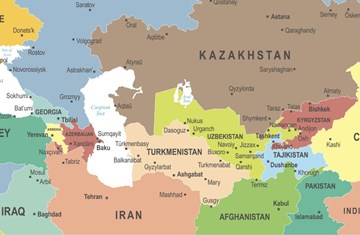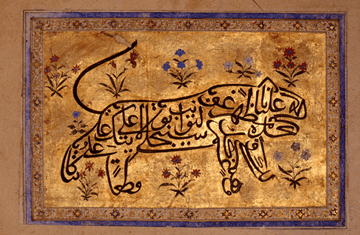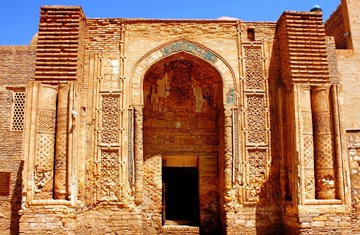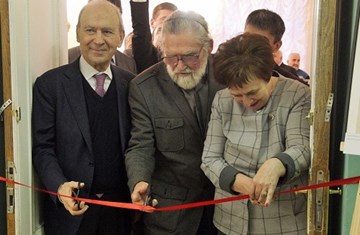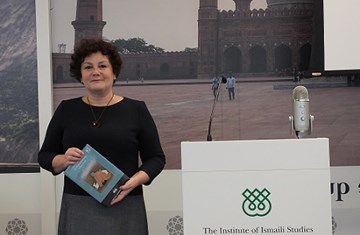IIS Collaborates with Foundation for Endangered Languages for Conference in Tajikistan
The Institute of Ismaili Studies (IIS) in collaboration with the Foundation for Endangered Languages (FEL), The Academy of Sciences of Tajikistan (AST), and the Institute of Humanities, Khorog, Tajikistan, organised the 13th Annual International Conference of FEL, which took place in Khorog from 24 to 26 September, 2009.
Khorog, capital of the remote, mountainous Gorno-Badakhshan Autonomous Province (GBAO) of Tajikistan, was chosen to host the conference as the region is the most linguistically diverse in Central Asia; and is designated a ‘Museum of Languages’ by many scholars engaged in the study of Pamiri languages, such as Drs Joy Edelman and Dodikhudo Karamshoev.
The 2009 FEL conference investigated the complex interrelation of endangered languages and history. Discussions included both how historical research can benefit the preservation and revitalisation of endangered languages as well as looking at how their study can answer historical questions. Often scholars seek answers to the historical development of nations, their values and ethics, way of life, arts and crafts, and religious traditions in the endangered languages of minorities. These languages form a vital part of linguistic diversity worldwide while adding value to community life and promoting a sense of identity.
The three-day conference brought together over 50 participants from eight countries, including Australia, Denmark, the Netherlands, Pakistan, Russia, Tajikistan, UK, and USA. Papers were presented and published in four languages, including Tajik, English, Russian and Dari/Persian. Welcoming speeches were delivered by Mr Shamsiddin Orumbekov, Deputy Chairman of GBAO; Dr. Oghonazar Aqnazarov from the Academy of Sciences of Tajikistan; Dr Shodikhon Yusufbekov, Director of the Institute of Humanities, and Dr Nazar Nazarzoda, Director of the Institute of Languages and Literature. The speakers expressed the importance the Tajik government attaches to Tajikistan’s language policy and drew attention to the Law on Languages, which calls for preservation and promotion of the Pamiri and Yaghnobi languages as cultural assets of Tajikistan.
In his keynote speech, FEL’s President, Professor Nicholas Ostler traced the history of Western European and Central Asian languages. He stated that if a language becomes endangered, three aspects of social life are also threatened: the identity of the speech-community may be demeaned and even permanently extinguished; community life which takes place exclusively in this language will shrink; and local traditions will eventually die out. The third point is particularly relevant, since these traditions, whether oral or written, constitute the ‘story’ of the language and the community in which it is spoken.
Mr Hakim Elnazarov, the Conference Programme Chair and the IIS Coordinator of Central Asian Studies, highlighted that the Pamiri and Yaghnobi languages are a valuable part of Tajik heritage. These languages are the successors of more ancient languages, such as Sogdian, spoken across Central Asia, and the languages of interaction of many civilisations along the Silk Road. Mr. Elnazarov stated that the conference will create greater participation by various stakeholders in safeguarding these endangered languages; including by making use of them for educational purposes, such as language speakers being taught in their mother tongue in primary school.
Currently, research projects are underway at the Institute of Humanities in Khorog and the Institute of Languages and Literature in Dushanbe creating scripts and writing textbooks for Pamiri and Yaghnobi languages.
The speakers of the Yaghnobi languages are scattered in the Zarafshan valley, predominantly in the narrow Yaghnob valley. The Pamiri languages (Shughni, Rushani, Bartangi, Roshorvi, Ishkashimi, Sariquli, Wakhi) and their various dialects are spoken in the GBAO region and the adjacent areas of Afghanistan, Northern Pakistan and Western China. The degree of their endangerment varies but all are included in the UNESCO 2009 Atlas of the World’s Languages in Danger of Disappearing.
It is hoped that this conference will contribute to language preservation efforts in Tajikistan and more generally to the international endeavour to protect endangered languages worldwide, as these constitute a valuable part of the intangible aspects of the human heritage. More information and FEL conference proceedings can be obtained at http://www.ogmios.org/.


